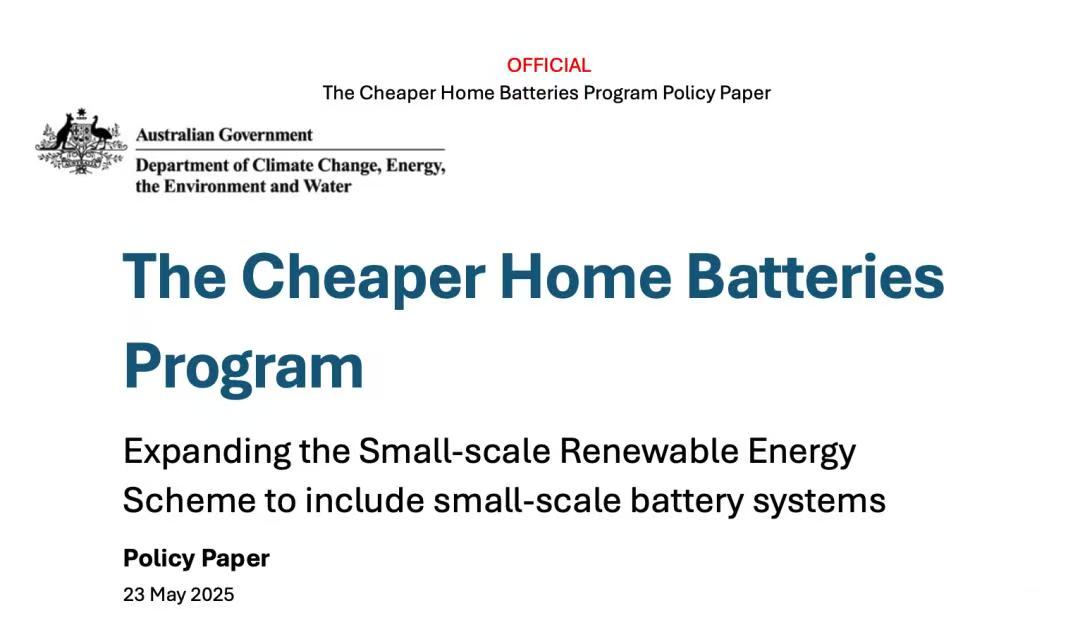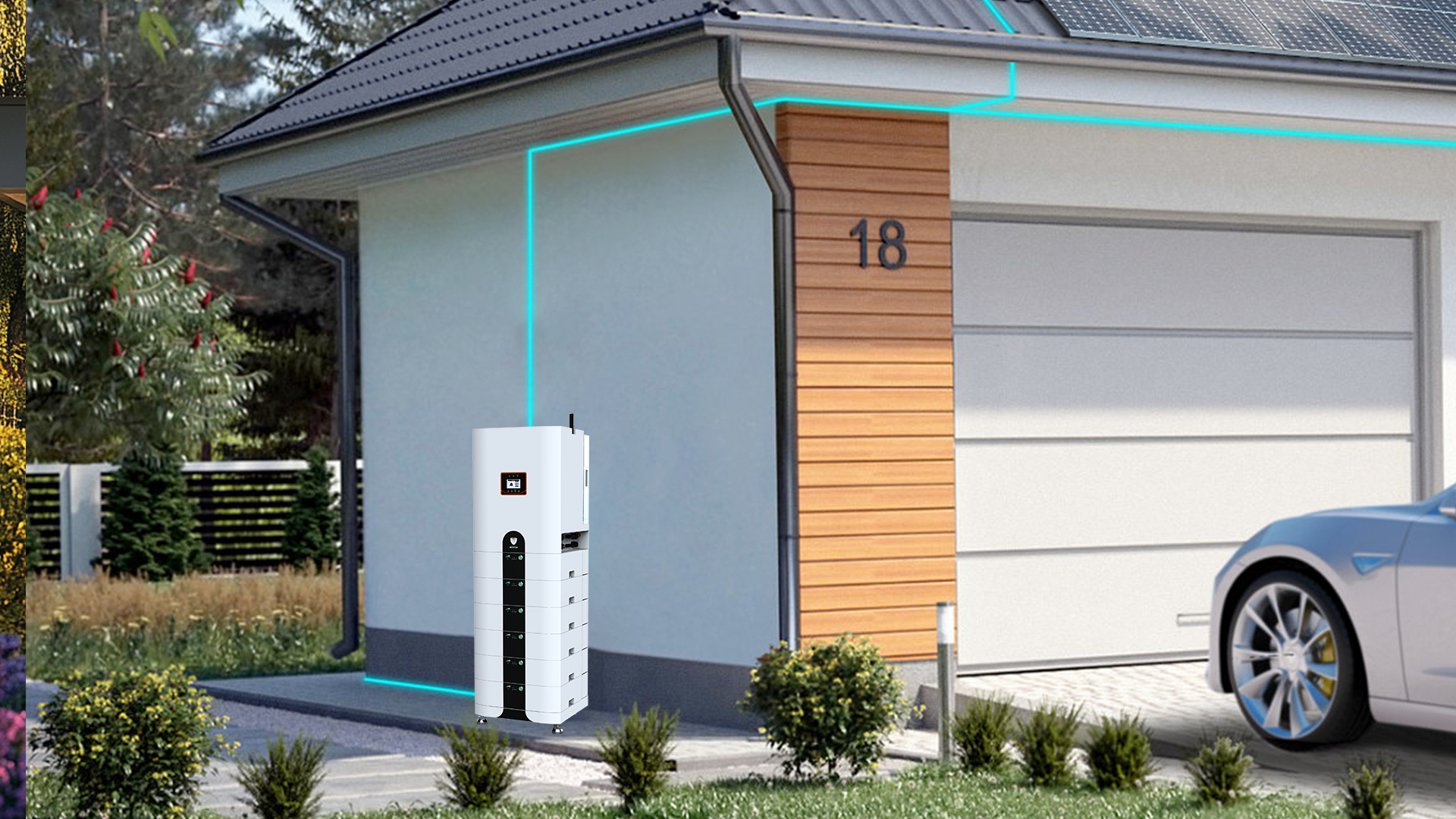Australia has announced a A$2.3 billion subsidy plan for solar panels, benefiting hundreds of thousands of households and accelerating the energy transition.
Australia's energy transformation is accelerating, and a series of heavyweight policies and investment plans are reshaping the country's energy landscape. On July 1, 2025, the Australian federal government's "cheaper home battery plan" will be officially launched, with a total investment of up to A$2.3 billion, providing generous subsidies for home users, community facilities and small businesses, and promoting the large-scale popularization of energy storage systems. At the same time, the Western Australian government also announced that it would invest A$50 million in the 2025-26 fiscal year to launch a local battery manufacturing plan to help the development of home energy storage and accelerate the realization of the goal of coal-fired power withdrawal in 2030.  A$2.3 billion home battery subsidy plan: universal benefits and incentives
The Australian federal government's "cheaper home battery plan" is undoubtedly one of the core initiatives of this energy transformation. The plan will provide a one-time installation discount subsidy for home users, community facilities and small businesses, significantly reducing the initial cost of energy storage systems. The subsidy is impressive: the subsidy is up to A$372 per kWh according to the battery capacity, with no total limit and first come first served. This means that households that install 5kWh batteries can receive a subsidy of about AUD 1,860, 10kWh batteries can receive a subsidy of about AUD 3,720, 15kWh batteries can receive a subsidy of about AUD 5,580, and 50kWh batteries can receive a subsidy of up to AUD 18,600. Although the specific subsidy amount still needs to deduct the management fee and installation service fee of the year, such a subsidy has undoubtedly greatly lowered the threshold for household energy storage.
The subsidy policy has a wide range of applications, covering not only household users, but also communities and small businesses. More importantly, the subsidy policy allows for superposition with existing subsidy policies in various states, allowing users to maximize their benefits. In terms of technical requirements, the minimum battery capacity must be ≥5kWh, the maximum subsidized capacity is 50kWh, and the maximum installed capacity can reach 100kWh. In addition, the system must have the ability to access a virtual power plant (VPP), but it is not mandatory to access it. The equipment must be included in the CEC (Clean Energy Council) certification list, and the installer must also have the corresponding qualifications.  The subsidy plan will officially take effect on July 1, 2025. Even if it is installed before that date, as long as it meets the conditions, it can also receive subsidies from July 1. The government plans to reduce subsidies year by year until they end in 2030. Therefore, for households and businesses that intend to install energy storage systems, early action will bring greater benefits.
From the perspective of economic benefits, users who newly install photovoltaic + batteries can save up to A$2,300 in electricity bills each year; users who only install batteries can save about A$1,100 each year. This not only eases the pressure on household electricity bills, but also greatly increases the rate of self-generation and self-use, achieving a win-win situation of green environmental protection and economic benefits.
Western Australia supports local battery manufacturing with A$50 million: a win-win situation for industry and energy transformation  The Western Australian government's A$50 million local battery manufacturing plan provides support for energy transformation from the industrial level. The plan includes A$30 million in enterprise matching subsidies (up to A$10 million per enterprise) and A$20 million in low-interest loans or land support, aiming to expand local production capacity to meet the surge in residential energy storage demand. This investment is linked to the state government's A$337 million residential battery plan and the federal "cheaper home batteries" plan, and is expected to benefit 100,000 households, providing up to A$7,500 in subsidies and interest-free loans.
The governor of Western Australia emphasized that home energy storage will work with large battery projects such as Kwinana to support grid stability and help achieve the goal of completely withdrawing from coal power by 2030. Supporting energy transformation investments also include A$584 million to expand the Southwest Interconnection and access renewable energy in the north; A$83 million to promote local manufacturing of electric buses/ferries; A$30 million to attract key minerals/hydrogen energy projects; and A$25 million to establish a transmission equipment localization fund to strengthen the competitiveness of the local supply chain.
Opportunities and challenges coexist: the future of Australia's energy storage market
This series of measures by the Australian government has released a very positive signal: energy storage products will become an important development direction in the next five years, and it is also a golden window period for new energy companies to enter the Australian market. For homeowners, installing a battery system can not only save electricity bills, but also increase energy self-sufficiency and contribute to environmental protection; for project parties and investors, the potential of Australia's clean energy market is huge and worth in-depth layout.
However, opportunities and challenges coexist. With the implementation of subsidy policies, market competition will also intensify. Enterprises need to continuously improve their competitiveness in technology, cost and service to meet market demand. At the same time, how to ensure the fairness and effectiveness of subsidy policies and avoid market overheating or waste of resources is also an issue that the government needs to pay attention to.
In short, Australia's energy transformation has begun, and household battery subsidies and local battery manufacturing plans are just one step. In the future, with the continuous advancement of technology and the gradual maturity of the market, Australia is expected to play a greater role in the global energy transformation and provide more experience and reference for the world. Let us wait and see how Australia writes a new chapter in the field of energy storage. |



